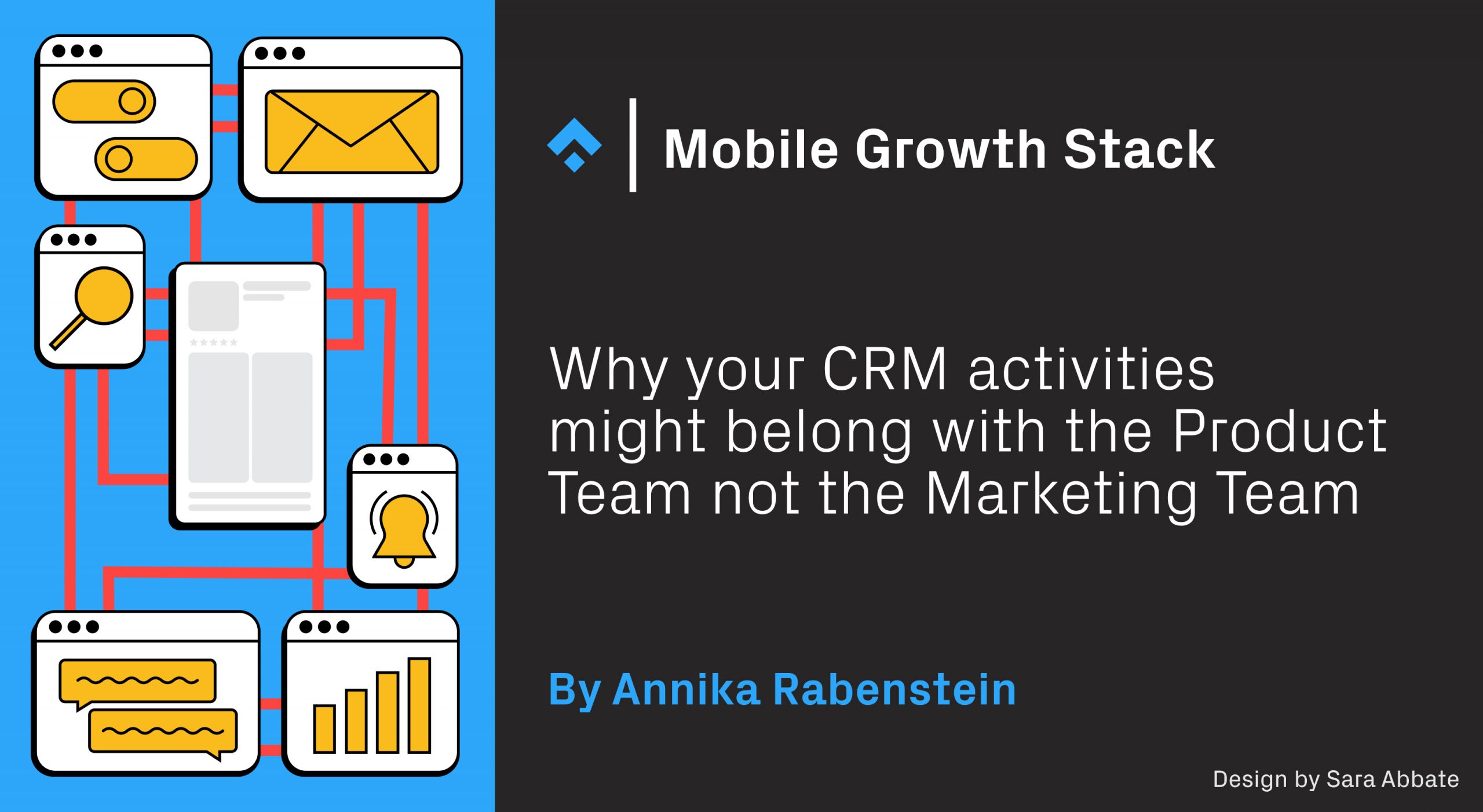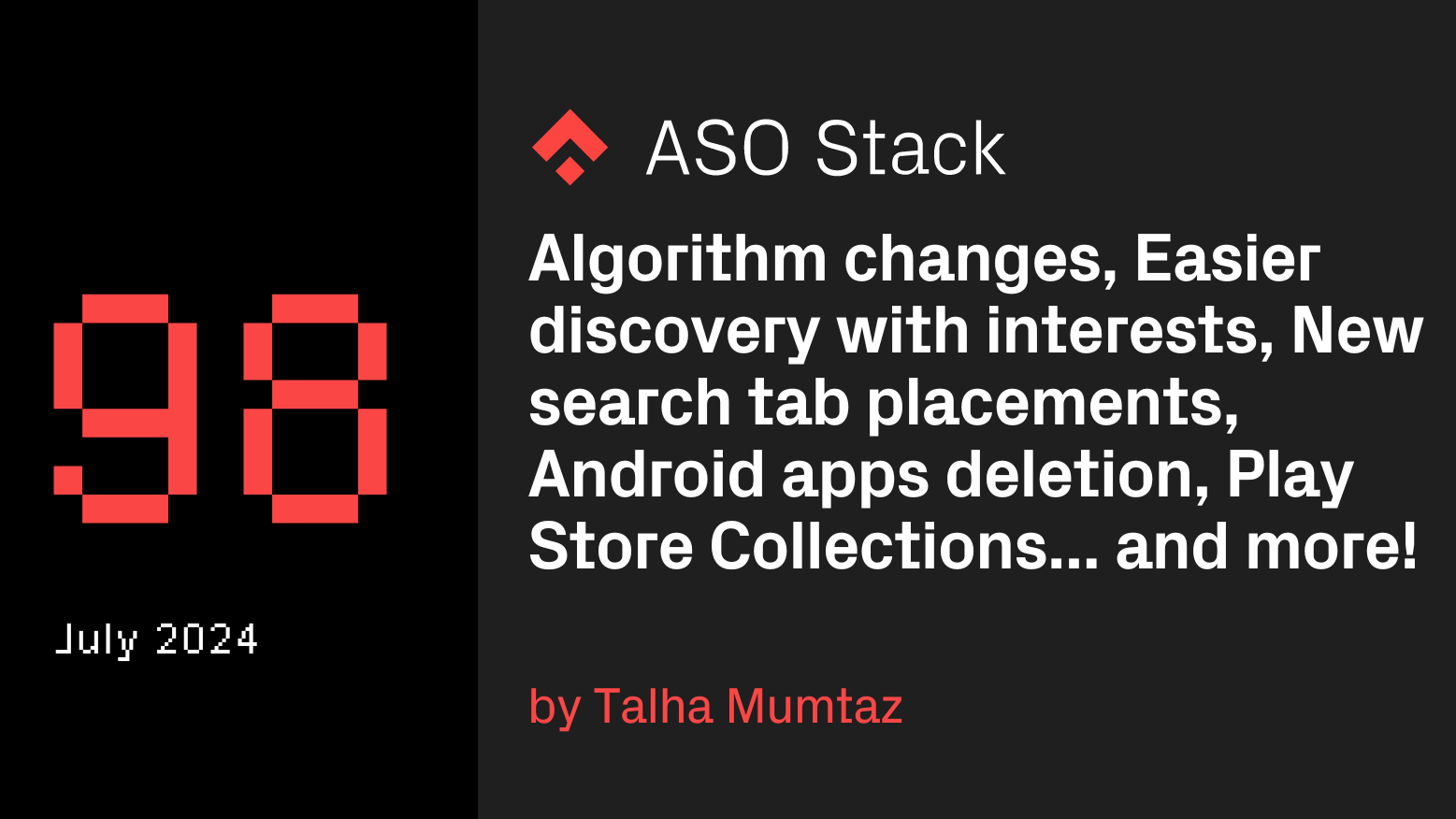
Since its inception, CRM has traditionally been placed by many companies under their Marketing Team. We ran a poll on Braze bonfire – a community for CRM Managers – and our result confirmed the overall preference for marketing as the home for CRM. However, in many cases, this placement is a legacy of CRM’s original foundation and has no bearing on how modern CRM teams actually work and operate. In fact, this structure could be hindering CRM activities. This article outlines why you might consider placing CRM under the Product Team, not the Marketing Team.

Created by Annika Rabenstein with /poll in Braze Bonfire.
Why does CRM commonly fall under Marketing?
To answer this question, we have to go back to the dawn of email marketing. Until then, CRM had consisted of cold calls and recording potential leads, or even going door-to-door to meet your customers. Just like the asteroid destroyed the dinosaurs, so did email marketing change everything forever. These early days were characterized by the sending of blast marketing emails and newsletters to bought email address lists and organic prospects alike. Back then, these email activities were CRM, and, not coincidentally, it was during these boom years that the term “newsletter” became so tainted.
CRM has since evolved into something much more multi-layered and complex than just email marketing. That said, a connection is still subconsciously drawn between CRM and marketing activities. In our experience, the thought process often goes something like this: this is an email, so then it is marketing, or, we use the same content in an in-app message, so it has to be marketing as well.
In fact, CRM is not about sending newsletters anymore but rather paving seamless user journeys for your product. Not only has the work and goals of a CRM Manager changed, but so have the channels they use. There are considerably more touchpoints with the user now, not least push notifications and in-app messages.
Why might you place CRM under Product?
It’s these touchpoints of push notifications and in-app messages that make it more important than ever that CRM is closely aligned with your Product Team and product strategy, rather than separately organized by the Marketing Team. While marketing acquires prospects through various channels after the user has been acquired, it is important to make sure the user is active on your product. This, ultimately, is the job of a CRM Manager but also the Product Team. They share the same goals and should have a similar understanding of the user flow, and how to activate and engage the user through all possible channels.

We test and optimize product design and UX constantly (as should all apps) and we also do it for all CRM campaigns throughout the user lifecycle. This is really where Product Team activities and CRM go hand in hand. When using in-app messages, CRM Managers are influencing the product UX and impacting the work of the Product Designer. It’s important that the user experience is not negatively impacted here, while the CRM Manager needs to understand the aims and strategy of the product team.
A common example of the need for CRM/Product collaboration is the inclusion of in-app upselling or discount screens. Their inclusion is often driven by marketing priorities (conversion goals), with these screens often offering a generous discount that is pushed to everyone. That means showing every user this discount when they start a new session, and even to very new users.
Obviously, this is not ideal. When each user opens an app, they come with a certain intent. It might be working out, listening to music, or meditating. It might even be to experience the app for the first time. In spite of this, suddenly the upsell screen appears and the user has to close it before moving on.
It might sound like a minor issue, but it is one more step between the user and where they wanted to go and an interruption of the user’s intent. When a user drops off due to an upsell screen or any other interruption, product metrics such as time spent on the app or conversion events completed will be affected negatively. Consider the example of a workout app. It’s early morning and you’re about to do a quick workout before work. You choose a workout and press start. After ten minutes into your training, an in-app message pops up asking you to purchase a subscription. What is the overall feeling here? You are sweaty but enjoying the workout, however, you are also in the middle of the product experience and actually in a plank position so you don’t want to click on a screen. Frustration sets in because it interrupts not only your workout but also your product experience.
 .
. 
This isn’t just frustrating for the user itself but can have a negative effect on experiments run by the product team or previously tested flows.
In addition, with the CRM Team being part of the product team, new possibilities open up. For example, the Product Team might want to test a new screen or onboarding flow. With the right tech stack, this is easier to realize in collaboration with CRM instead of building it natively. The implementation will be faster, and the results easier to track. That makes iterating easier and more efficient by using fewer resources which, in the end, is more cost-effective.
What else do CRM and Product Teams have in common?
Both CRM and Product Teams should share the goal of creating truly data-driven customer engagement and should want to connect customers to the value that already exists in the product.
Many companies now build growth teams and focus all their efforts on growth. Growth Teams typically come in a pod structure which makes it easier for Marketing, Engineering, Design, and Product Teams to work together.
At the center of a Growth Team, you will find a Product Manager. This role focuses on the user’s journey with a product, through the lens of business metrics like sign-ups, user activation, conversions, monetization, and retention. These responsibilities are one of the core arguments for having CRM as part of your Product Team since this is where your CRM Manager plays a vital role in building the campaigns that are a perfect fit for the user and for the product strategy.
Similarly, both teams share event taxonomy. Events and attributes that are being tracked and used for analytics are usually used by the CRM Manager to trigger campaigns at the right time for the user. We have often found taxonomy is not the same between teams in the same company. It is crucial that everyone has a clear understanding of what is tracked, how it is tracked, and how it can be used.
Indeed, “Data” can end up meaning different things to different teams, departments, and organizations, despite the product tech stack being very similar to the CRM tech stack. To analyze users’ behavior and the funnel, an analytics tool like Amplitude or Mixpanel is often used. Those tools examine in-app events that are typically the same as the CRM Team would use. This event data can be enriched by data from the backend to visualize full journeys, funnels, and where your users drop off, to aid with retention efforts.
Sharing the same events and attributes across tools reduces implementation costs and friction when talking about data across teams. Everyone has a common understanding of what certain events and attributes mean and what value they hold. Using the same taxonomy on top of a common understanding of user segments and personas is the key to a cohesive user experience.
Therefore naming conventions for events, properties, and attributes should be the same across all teams to ensure that tracking and reporting are seamless but also to make sure that everyone talks about the same events.
Example events the Product Team and CRM would act on with active messaging include: signup completed, onboarding started, onboarding completed, main conversion event (purchase completed, meditation done, movie watched, whatever it is on your product). Instead of having the messages done on the product side, leverage the CRM Team. That prevents the user from getting multiple, inconsistent messages that would feel like spam.
Marketing vs Product – whose job is it?
Marketing and Product Teams’ jobs can be clearly defined, but that does not mean that they should be encouraged to work in silos. Working together is important for a seamless user experience when it comes to engagement through content and using one common language. Again, both teams should support each other.

Everything pre-sign up:
|
All touchpoints post-sign up / abandoned sign up:
|
|
|
The Marketing Team should cover everything that happens before the user gets to the product and signs up. In brief, it should have a pure acquisition focus. Once the user is on your app they are using the product and marketing’s work ends. The focus ought to switch from advertising to educating the user on the product benefits and how it works. This should already be clear to the user before they start using the app since the user doesn’t know what to expect they are more likely to leave and uninstall the app.
One instance that needs combined efforts would be in-app promotions. Marketing and Product Teams should work together to find a good place and timing for such a promotion. For this end, it is useful to understand from the marketing side where the user was acquired. That information can be fed into the CRM strategy and messaging, so it is displayed at an appropriate time to an appropriate user.
What to do now?
If you’d like to act on this, it’s worth considering your CRM OKRs and Product OKRs to find parallels or similarities, then discuss within your teams how you can support each other to achieve these goals.
For instance, let’s say the Product Team wants to see an uplift in the number of user signups. How does CRM come into play here? While the Product Team is thinking about several experiments in the onboarding flow and on the signup screen, the CRM Manager will suggest supporting campaigns such as an “abandoned sign up flow” campaign or similar. This will in turn impact upon the Product Team’s goals.
There are plenty more use cases for two teams joining forces and collaborating. You don’t need to spend thousands and thousands of dollars on marketing when your product is working and your teams are aligned on the company goals.
Before you go
- Android 13 heralds big changes to push notifications and CRM. Users will be able to choose directly in the app if they want to enable push notifications or not, and, by the end of 2022, Android 13 users will no longer receive push notifications by default until they give explicit permission to receive them. Be sure to read our overview of the changes, and how you can best prepare for them.
- Want to discover more about CRM strategy and how CRM campaigns closely aligned with Product Teams can unlock user experience? Head on over to our Success Stories page to find out more about how Phiture helps apps realize their mobile growth ambitions.
- Feel free to share your experience with new features or reach us out on Mobile Growth Stack Slack Channel for any advice on these topics.


















